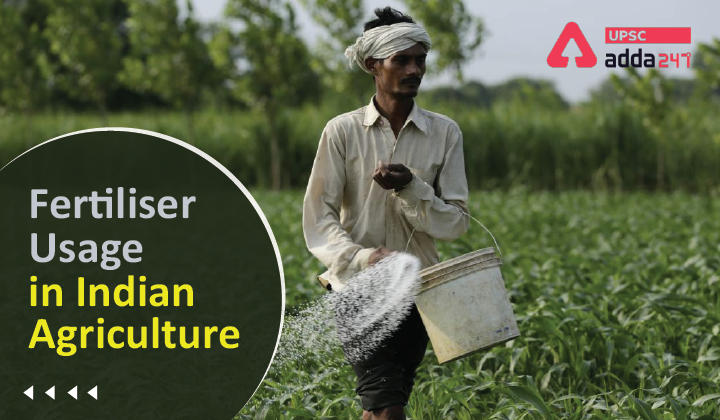Table of Contents
Fertiliser Usage in Agriculture
A few months ago, the price of DAP fertiliser was increased by 140% to retain the selling price for farmers at the current level and hence reduce the burden on the farmers. The step has again brought forward the use of fertilisers in Indian agriculture. In this article, we will understand the fertiliser issue in Indian agriculture. Read about Draft Integrated Plant Nutrition Management Bill 2022
To begin with, let us first understand two basic questions regarding DAP.
Why the hike in subsidy?
- The price of fertilizers is undergoing an increase due to international rise in prices of phosphoric acid, ammonia etc.
- Union government is bearing the whole price rise and is making available the DAP fertiliser at the previous rate.
What is DAP?
- DAP is the second most commonly used fertilizer in India.
- The fertilizer is high in Phosphorus.
Fertiliser subsidy in India: A brief introduction
- Under the subsidy regime, farmers buy fertilizers at MRP.
- This MRP, however, is below the market rate.
- It is important to know that while the price of urea is controlled by the Government, it is decontrolled for other fertilizers.
- In fact, for some of the non-urea fertilizers, government launched nutrient-based subsidy or NBS scheme.
Why is fertiliser subsidy needed?
- Cushioning the farmers from price rise: By giving fertiliser subsidy, government provides cushion to farmers against any price rise in future. The fertiliser subsidy assures the farmers of a fixed assistance to them and hence grow the crops, without thinking much about the market uncertainties.
- Boost production: Due to the fertiliser subsidy, production also rises as the farmers then grows the crops with the same amount of investment they put earlier.
Steps to prevent fertilizer overuse
- Since dec 2015, government of India is implementing the compulsory neem-coating of all urea based fertilisers to curtail the negative impacts of fertilisers on environment.
- Since 2018, the government has also made fertilizer subsidy payment to companies’ conditional upon actual sales to farmers being registered on point-of-sale machines.
- Moreover, there is an upcoming plan to cap the total number of subsidised fertilizer bags that any person can purchase during an entire cropping season.
Issues with fertilizer subsidy
- No Denial Policy: At present, anyone can purchase any quantity of fertilizers through the PoS machines. Though, there is a limit of 100 bags per transaction, but no limit has been placed on the number of transactions.
- Environment Degradation: The subsidies have enabled the over utilisation of fertilizers on agricultural lands. This is true specifically for urea which has witnessed a minor price rise since the last decade. This increased use of fertiliser lead to many problems like infertility in soil and eutrophication in water-based ecosystem.
- Subsidies have high economic cost, thus putting pressure on state exchequer.
- Over use of fertilizers also pollutes groundwater. The issue has more worrying effect as the infants who drink water with high levels of nitrate (or eat foods made with nitrate-contaminated water) may develop the disease called blue baby syndrome.
Fertiliser usage in India: Suggestions
- The government should consider alternative ways to help the farmers like the use of Direct Benefit transfer instead of subsidies. This would not only curb its diversion for non-agricultural use but also reduce the number of fraudulent beneficiaries.
- Moreover, as recommended by the Sharad Pawar Committee in 2012, urea should be included under the NBS scheme in order to reduce the fiscal burden of fertilizer subsidy on the government.
- Also, the focus should be on discouraging the use of chemical fertilizers and encouraging the adoption of organic fertilizers like vermicompost.
- In the long run, the agricultural income of farmers should be increased so that they voluntarily give up their subsidies in the future.
Fertiliser in agriculture: Conclusion
- It is high time that the input-based subsidies should be replaced with investment-based subsidies in order to achieve the objective of doubling farmer income, and thus making agriculture a remunerative occupation.





 TSPSC Group 1 Question Paper 2024, Downl...
TSPSC Group 1 Question Paper 2024, Downl...
 TSPSC Group 1 Answer key 2024 Out, Downl...
TSPSC Group 1 Answer key 2024 Out, Downl...
 UPSC Prelims 2024 Question Paper, Downlo...
UPSC Prelims 2024 Question Paper, Downlo...




